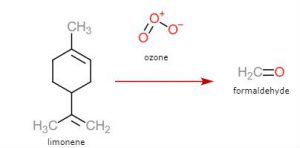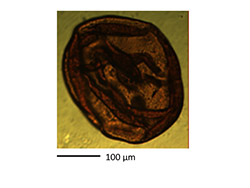How often do you use air fresheners, candles, or perfumes at home? A lot of people love using perfumes when they go out, and air fresheners and candles to get rid of unpleasant smell in their homes. But, have you ever thought about where those chemical substances go?
The researchers from The York University in UK have discovered that level of limonene, which is the main source of citrus scent in perfumes and air fresheners, was significantly high in homes that use perfumes. Limonene is a common substance that also exist in foods we eat, and is not harmful to our health. However, the problem occurs when limonene reacts with ozone, which is part of the air we breath in. The limonene reacts with ozone to produce formaldehyde.

Limonene react with ozone to form formaldehyde copyright-created by Diana Kim
Formaldehyde is named as a known human carcinogen. Ozone is also present indoors, with higher level when we use electronic devices. Therefore, when we use perfumes at home, it is likely that the limonene will turn into hazardous carcinogen in the air. The research also has mentioned that higher concentration of limonene in the air means there are more possibilities that it is going to turn into formaldehyde. It is better to use perfumes in an open space, with windows opened to let the substances out.
To minimize the exposure to formaldehyde in your home, it is the best to ventilate home regularly. Also, having air-filtering plants at home helps getting rid of formaldehyde in the air. The air-filtering plants, such as garden mum, spider plant, dracaena, ficus, and peace lily, absorb formaldehyde in the air.

https://commons.wikimedia.org/wiki/File%3APeace_Lily.JPG
Although scents can help stabilize our emotions and therefore can be good for our mind and gets rid of unpleasant smell immediately, we would have to think more about how it can harm our health directly.
-Diana Kim-


